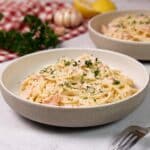
Creamy Garlic Salmon Pasta
Ingredients
- 4 cups of spaghetti
- 3 salmon fillets
- 1 tablespoon salt
- 1 teaspoon pepper
- 1 onion
- 5 garlic cloves
- 2 tablespoons butter
- 1 tablespoon olive oil
- 1 ½ tablespoon flour
- ½ cup chicken broth
- 1 cup whipping cream
- 2 tablespoons lemon juice
- 2 teaspoons Italian seasoning
- ½ cup freshly grated parmesan cheese
- Sprigs of fresh parsley
Instructions
- All ingredients ready? Let's begin!

- Start off by filling a large pan with hot water and bringing it to a boil. Then sprinkle in a pinch of salt and add all of your pasta.
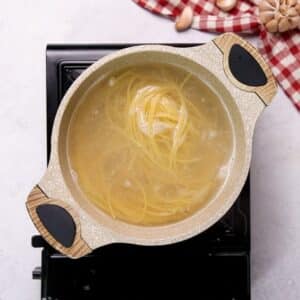
- While your pasta is cooking, prep your salmon fillets. Lay your salmon fillets on your work top and pat them dry using some kitchen roll. This will ensure a crispier finish to the salmon.
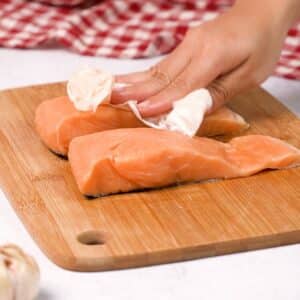
- Season the salmon fillets with a generous amount of salt and pepper. Do this on both sides of all of your salmon fillets.
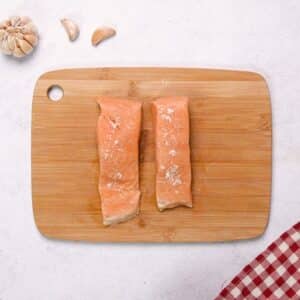
- Check on your pasta before you start cooking your salmon fillets. When it is al dente (still a little firm bust mostly cooked) remove the pasta pot from the heat.
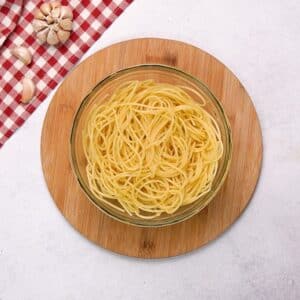
- Drain the pasta and toss with ½ tablespoon of olive oil. This will prevent the spaghetti from sticking together while you prep the rest of your meal. Set the pasta aside for now.
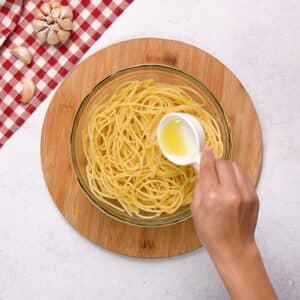
- Prepare a large, non-stick frying pan by heating the butter and ½ tablespoon of olive oil together on a medium high heat.
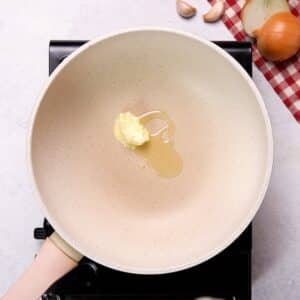
- When the oil is sizzling, take your salmon fillets and place them directly into the oil, skin side up if applicable. Be careful of any splashing oil.

- Allow the fillets to sear for 5 minutes then flip the salmon over, searing the other side for a further 5 minutes or until fully cooked. You will be able to tell when the salmon is cooked by how flaky it is.

- As soon as the salmon has reached peak flakiness, turn off the pan and move the salmon fillets to a clean plate or chopping board.
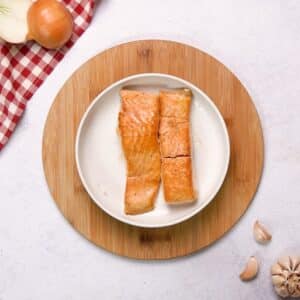
- Grab 2 forks and shred the salmon, turning the fillets into perfect bite size pieces. Do this as soon as the salmon is out of the pan. Set aside.
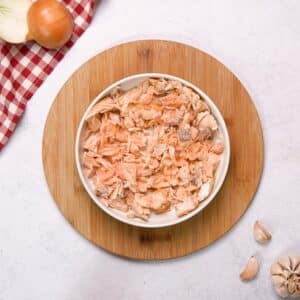
- Reheat the same pan that you used to cook the salmon, this time on a medium high heat again.
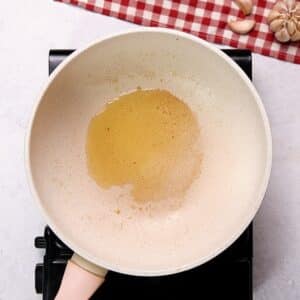
- Peel and finely dice the onion and garlic, then add to the pan and saute for about 2 minutes or until they emit a deliciously fragrant smell.
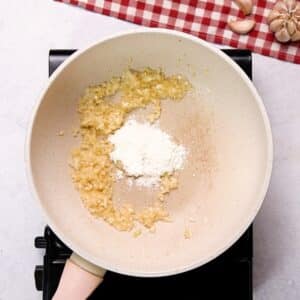
- Switch to a whisk and mix the flour into the pan, cooking for a further 1 minute to properly incorporate. Do not worry if the flour makes your pan too dry at this point, just keep mixing.
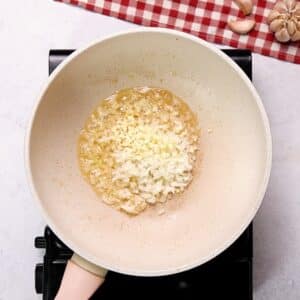
- After 1 minute, slowly pour your broth into the pan, stirring all the while. Give the whole sauce a good mix until no floury lumps remain.
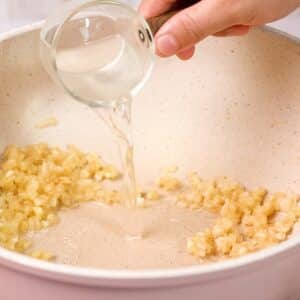
- Like with the broth, slowly add your heavy cream to your sauce and continue to stir.
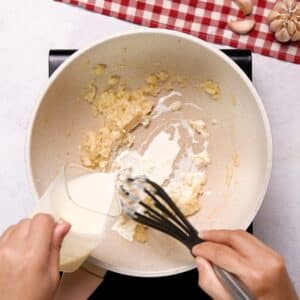
- After your broth and cream are fully incorporated, you can add the Italian seasoning and parmesan cheese to the sauce. Add some salt and pepper for seasoning as well and mix everything other until fully combined.
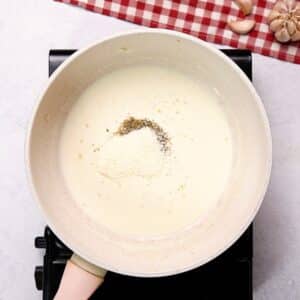
- Allow the sauce to reach a simmer and then quickly reduce the heat to medium low.
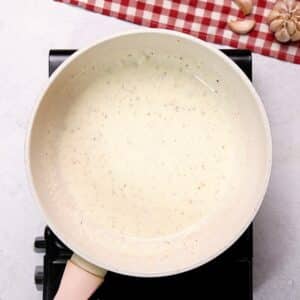
- Stir the sauce consistently for 5 or so minutes while it reduces to stop it from burning at the bottom.
- As soon as the sauce is at your desired thickness, turn off the heat and add the cooked and shredded salmon directly to the sauce. Stir with a wooden spoon to help evenly distribute the salmon the sauce.
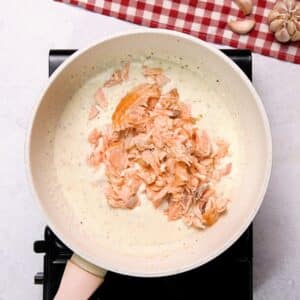
- Finally, add in your cooked pasta and gently toss everything together to properly combine.
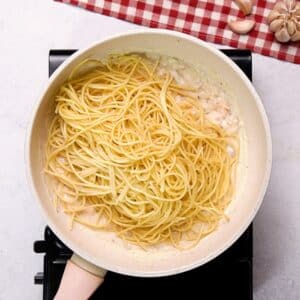
- When you are ready to serve, give each plate a quick drizzle of lemon juice and a pinch of chopped fresh parsley. Some grated parmesan cheese can also be served for that little extra flair.

Video
Nutrition
Calories: 920kcal | Carbohydrates: 124g | Protein: 42g | Fat: 27g | Saturated Fat: 12g | Polyunsaturated Fat: 4g | Monounsaturated Fat: 8g | Cholesterol: 98mg | Sodium: 1433mg | Potassium: 881mg | Fiber: 6g | Sugar: 7g | Vitamin A: 705IU | Vitamin C: 4mg | Calcium: 197mg | Iron: 3mg